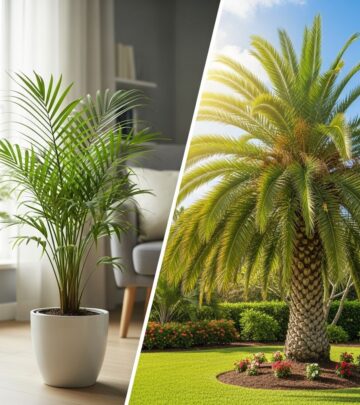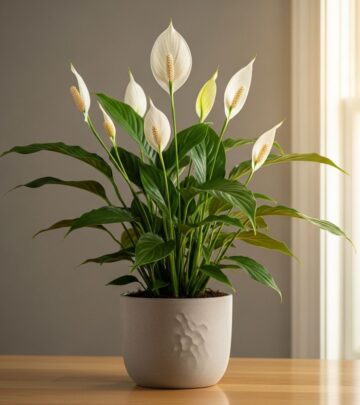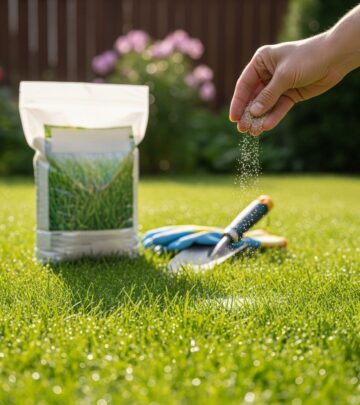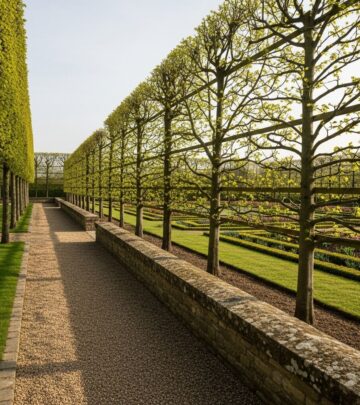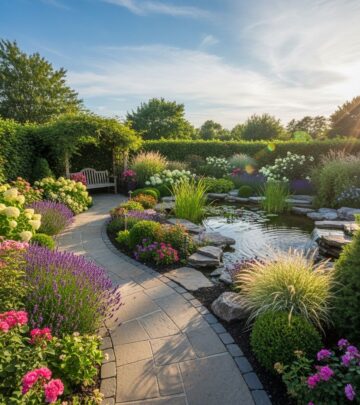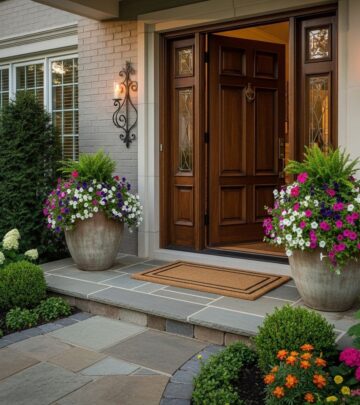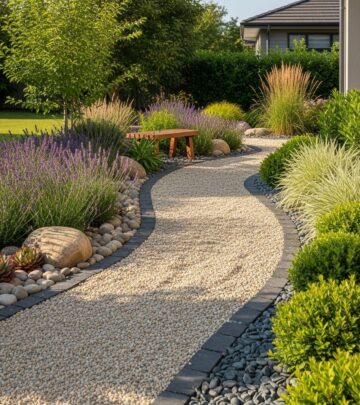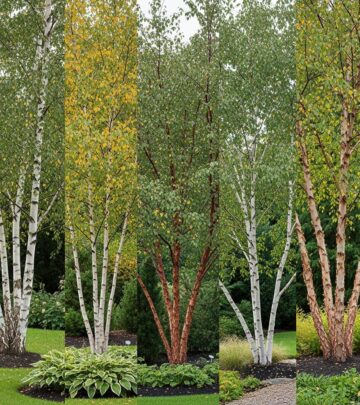Wellness Garden Design: 5 Essential Steps For Mindful Spaces
Learn how to design a wellness garden that nurtures your body, mind, and spirit through nature, tranquility, and intentional spaces.
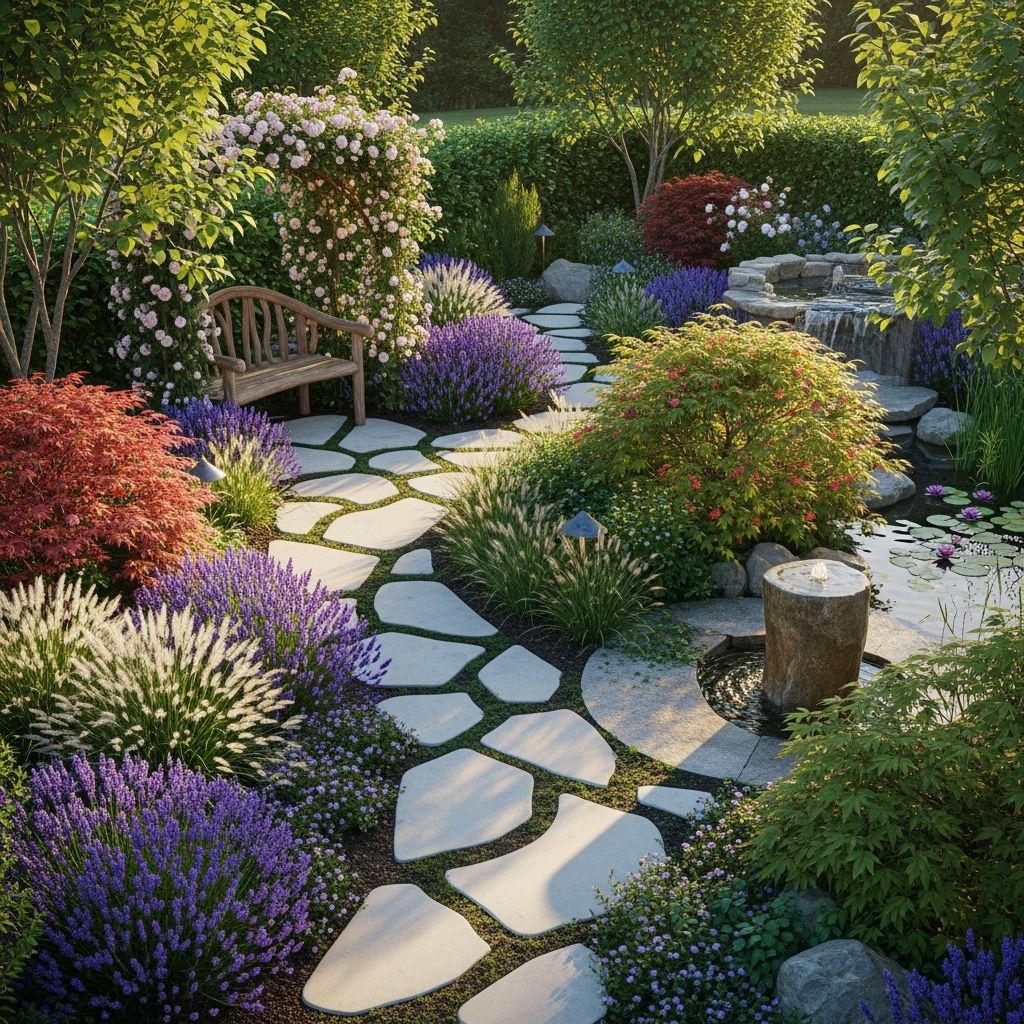
Image: HearthJunction Design Team
Designing a Wellness Garden: Creating Outdoor Spaces for Health, Mindfulness, and Healing
In today’s fast-paced world, gardens have become more than just ornamental landscapes. They are sanctuaries for wellness, offering restorative benefits for the body, mind, and spirit. Whether transforming a backyard, balcony, or community space, wellness gardens empower individuals to reconnect with nature, reduce stress, and foster holistic health. This article explores the principles, benefits, and practical steps of designing a wellness garden, drawing from leading practices in landscape design and therapeutic horticulture.
What is a Wellness Garden?
A wellness garden is a thoughtfully designed outdoor space that promotes physical, mental, and emotional well-being. These gardens are built to foster relaxation, encourage mindfulness, and connect individuals with the healing power of nature. The essence of a wellness garden lies in its intentional layout and features, which prioritize comfort, accessibility, sensory engagement, and opportunities for reflection or activity.
Wellness gardens come in various forms, from intimate meditation corners to expansive healing landscapes in hospitals and communities. Regardless of scale, they share a commitment to enhancing quality of life.
Benefits of Wellness Gardens
- Stress Reduction: Immersing in greenery and calming environments lowers cortisol levels, diminishing anxiety and restoring emotional balance.
- Improved Mental Health: Access to natural spaces is linked to better mood, reduced depression, and cognitive restoration.
- Physical Health: Gardens encourage gentle movement and outdoor activity, supporting cardiovascular, respiratory, and overall physical well-being.
- Enhanced Social Connections: Wellness gardens can serve as communal spaces, strengthening bonds and encouraging shared mindfulness or activity.
- Mindfulness and Reflection: Intentional spaces for meditation or contemplation foster present-moment awareness and emotional clarity.
Types of Wellness Gardens
There is no one-size-fits-all approach to wellness gardens. Depending on the needs of users and the space available, several types emerge, each with key elements and benefits.
Meditation Garden
- Simplicity: Clean lines and uncluttered arrangements encourage calm and focus.
- Water Features: Gentle fountains or ponds provide soothing sounds and visual interest.
- Seating Areas: Benches or meditation cushions for quiet contemplation.
- Natural Materials: Stone, wood, and gravel keep the space earthy.
- Greenery and Shade: Dense plantings like bamboo or ferns offer privacy and tranquility.
Healing Garden
- Accessibility: Wide, smooth paths and raised beds make the space usable for all, including those with mobility challenges.
- Sensory Elements: A rich palette of plants chosen for sight, smell, sound, and touch.
- Therapeutic Features: Areas for horticultural therapy, gentle movement, or reflective activities.
- Emphasis on Safety: Secure handrails, slip-resistant surfaces, and shaded rest areas prioritize visitor well-being.
Restorative Garden
- Nature Immersion: Dense plantings, winding paths, and wildlife-friendly elements invite users to lose themselves in nature.
- Positive Distraction: Fragrant plants, moving water, and gentle wildlife like birds or butterflies offer uplifting sensory experiences.
- Privacy and Comfort: Enclosed areas or shelters help users feel safe and secure.
Interactive and Activity Gardens
- Raised Beds & Containers: Enable easy gardening, harvesting, and active engagement.
- Movement Spaces: Open lawns or smooth patios accommodate yoga, tai chi, or stretching.
- Social Nodes: Gathering spaces with shaded seating for communal activity or rest.
Key Elements of a Wellness Garden
While each wellness garden is unique, certain features are commonly integrated for maximum therapeutic benefit.
- Paths: Meandering walkways encourage slow exploration and gentle exercise.
- Water: Fountains, small ponds, or birdbaths provide calming sights and sounds.
- Sensory Plants: Include fragrant herbs, textured leaves, colorful blooms, and edible varieties.
- Varied Seating: Benches, swings, hammocks, or floor cushions at strategic points.
- Shelter: Pergolas, arbours, or mature trees offer protection from sun and rain.
- Wildlife Features: Birdhouses, pollinator plants, or small ponds invite beneficial creatures, enhancing the connection with nature.
- Art and Sculptures: Subtle art pieces or stones can provide focal points for meditation.
- Lighting: Soft, low-voltage lighting extends usability into evening for peaceful night-time reflection.
Planning and Designing Your Wellness Garden
Intentionality is at the heart of wellness garden design. The following steps and considerations will help you create a garden tailored to your space and needs.
1. Assess Your Space and Users
- Evaluate available sunlight, soil type, drainage, and wind exposure.
- Consider who will use the garden: children, older adults, those with mobility aids, or individuals seeking solitude.
- Identify existing features that contribute to calm, such as trees or walls.
2. Define Your Goals and Activities
- Decide the primary function: meditation, exercise, social gathering, or therapeutic horticulture?
- Prioritize sensory engagement: which senses (sight, smell, sound, touch, taste) do you want to emphasize?
3. Select Core Elements and Features
- Choose plantings for all seasons, combining evergreens, perennial flowers, and herbs for year-round interest.
- Integrate water features or movable seating to add flexibility.
- Design paths that curve gently, encouraging slow movement and discovery.
4. Focus on Accessibility and Safety
- Ensure all paths are wide enough for wheelchairs or walkers if needed.
- Provide slip-resistant surfaces and handrails in sloped or wet areas.
- Install seating at regular intervals for rest and enjoyment.
5. Create a Unified, Cohesive Design
- Use repeated plant groupings or materials to connect different zones.
- Frame views with hedges or trellises, drawing attention to key focal points like a water feature or specimen tree.
- Layer plant heights for depth and a sense of enclosure without feeling confined.
Wellness Garden Inspiration: Design Ideas
- Water Features: A central pond, gentle stream, or even a tabletop fountain sets a meditative mood and attracts wildlife.
- Outdoor Rooms: Divide your garden into “rooms” for yoga, socializing, or solitary reflection using hedges, screens, or plantings.
- Wildflower Meadows: Swaying flowers and grasses add movement, texture, and habitat for pollinators.
- Edible Landscapes: Blend herbs, berries, or vegetables into ornamental beds for hands-on engagement and nutritious harvests.
- Natural Materials: Opt for permeable stone, wood, or gravel over concrete, rooting the garden in its surroundings.
Table: Types of Wellness Gardens and Key Features
| Type | Main Purpose | Key Features | Ideal For |
|---|---|---|---|
| Meditation Garden | Quiet contemplation, mindfulness | Simple layout, water features, private seating | Stress reduction, focus |
| Healing Garden | Physical and mental healing | Accessible paths, sensory plants, therapeutic spaces | Hospitals, rehabilitation, seniors |
| Restorative Garden | Immersive nature experience | Diverse plantings, wildlife, comforting enclosures | Nature lovers, emotional well-being |
| Interactive/Activity Garden | Engagement, gentle movement | Raised beds, open spaces, group seating | Families, therapy, social activity |
Tips for Maintaining Your Wellness Garden
- Choose low-maintenance, disease-resistant plants to reduce chore-related stress.
- Mulch beds to conserve moisture and suppress weeds for easier upkeep.
- Use drip irrigation or rain barrels to simplify watering and promote sustainability.
- Incorporate seasonal interest with bulbs for spring, annuals for summer color, and evergreens for winter structure.
- Refresh seating pads, repair paths, and clean water features regularly to keep the space welcoming.
Sustainability in Wellness Garden Design
- Restore soil health by adding compost or organic amendments.
- Favor native or adapted plants to reduce water and chemical use.
- Encourage biodiversity with layered plantings, bird feeders, and pollinator-friendly flowers.
- Harvest rainwater for irrigation and minimize lawn area.
- Construct paths and patios with permeable materials to aid drainage and groundwater recharge.
Frequently Asked Questions (FAQs)
What makes a garden a “wellness garden”?
A wellness garden is intentionally designed to promote health and well-being through features like soothing water, accessible paths, sensory-rich plants, and spaces for movement or quiet reflection.
How large does a wellness garden have to be?
Any size works—from a small courtyard, patio, or balcony to a sprawling backyard. Focus on incorporating key elements that support your needs, however limited the space.
Can I design a wellness garden myself, or do I need a professional?
Many wellness garden principles can be implemented by home gardeners, though large or public spaces may benefit from a landscape designer or therapeutic horticulture expert.
What are some good plant choices for wellness gardens?
Fragrant herbs (lavender, mint), textured groundcovers (thyme, lamb’s ear), colorful perennials (coneflower, salvia), and privacy plants (bamboo, boxwood) are excellent choices.
How do I make my garden more accessible?
Install wide, smooth paths; raised beds; handrails; and shaded seating, while avoiding slippery surfaces or steep slopes.
How can wellness gardens benefit children or seniors?
For children, wellness gardens invite exploration, sensory development, and gentle movement. For seniors, accessible designs and therapeutic plantings provide safe, restorative engagement with nature.
Conclusion
A wellness garden is more than a collection of plants: it is a living, evolving haven for restoring balance, fostering mindfulness, and nurturing health. By carefully selecting calming features, ensuring accessibility, and engaging the senses, you can create an outdoor refuge that supports your journey toward holistic well-being—and share its benefits with family and community.
References
- https://www.houzz.com/magazine/7-design-ideas-for-a-garden-that-supports-well-being-stsetivw-vs~160761906
- https://extension.psu.edu/how-to-create-a-healing-garden
- https://www.sunset.com/home-garden/landscaping/wellness-garden-design
- https://www.finegardening.com/article/how-to-design-a-restorative-landscape
- https://livepositively.com/wellness-garden-types-and-their-key-elements/
Read full bio of Srija Burman


